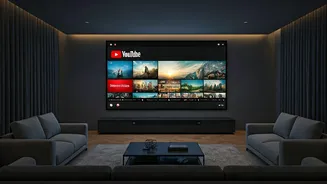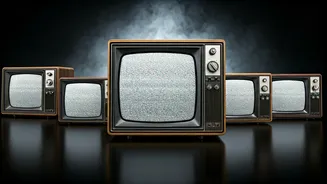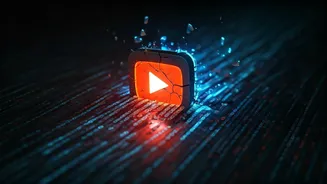YouTube's Ascent
YouTube has undergone a massive transformation, shifting from a simple video-sharing site to a central hub for entertainment, directly competing with and
often surpassing traditional television. The platform's algorithm, vast content library, and ease of access have contributed significantly to its popularity. It provides everything from short-form videos to live streams, creating a personalized viewing experience that caters to diverse interests. YouTube's accessibility is a key factor, making it readily available on smartphones, tablets, smart TVs, and computers, providing viewers with anytime, anywhere access. This accessibility, combined with the diverse range of content, has accelerated its adoption as a primary entertainment source. Further, it is important to recognize that YouTube has also cultivated a massive ecosystem of creators and audiences, solidifying its position as a major player in the media industry. The platform's success demonstrates the shift in how people now choose to consume content.
Changing Viewing Habits
The rise of YouTube has resulted in profound changes in how people consume video content. The preference for on-demand viewing, curated playlists, and personalized recommendations is a departure from the linear programming of traditional television. The shift towards shorter videos and binge-watching series aligns with modern lifestyles, and YouTube has effectively capitalized on these changing viewing habits. With its diverse content ranging from educational tutorials to full-length movies, YouTube has effectively catered to all of the audiences' demands. The platform’s ability to cater to such a wide range of tastes is a driving force behind its appeal. In essence, YouTube has not only mirrored the existing habits, but it has shaped new ones, influencing the way we approach entertainment, learning, and staying connected with the world.
Content and Creators
YouTube's success is a direct result of its enormous and diverse content and the creators who generate it. Independent creators, or YouTubers, have built large audiences, often surpassing the viewership of traditional television shows. These creators have unique creative control, and they have developed strong connections with their audiences. The diversity of content available on YouTube, from gaming and beauty tutorials to educational programs and documentaries, is truly astounding. The platform encourages experimentation and niche content, giving voice to creators and content that might struggle to find a home on conventional television. As a result, this dynamic platform has become a launching pad for content creators, transforming them into household names and generating new formats of content.
The Business Side
YouTube's economic model has revolutionized the advertising and media landscape. Advertisers can target specific audiences with unprecedented precision, thus making YouTube highly attractive to them. Content creators make money from ad revenue, sponsorships, and merchandise sales, making YouTube a legitimate career path. The growth of YouTube has affected traditional television, as the companies are facing challenges in attracting viewers and retaining their market share. The emergence of ad-free subscription services and the growing appeal of ad-supported platforms have further complicated this landscape. The business model of YouTube is also evolving, with new features and services being developed. These innovations show that the platform is ready to solidify its position as a central player in the media world.
The Future of TV
The continuous growth of YouTube suggests a change in the future of television. Traditional TV is forced to adjust to the new market realities. As the audience shifts their attention to digital platforms, television networks are facing the necessity of evolving their strategies. This shift includes investing in streaming services, producing original content, and forming partnerships with digital creators. The line between television and digital media is getting blurred, as both seek to provide the best viewing experience to viewers. Although the exact future remains uncertain, it is clear that YouTube will continue playing a huge role in the entertainment world. It is leading the way in content creation, distribution, and consumption. The traditional TV will be forced to compete or adapt, to stay relevant in this rapidly changing digital age.









